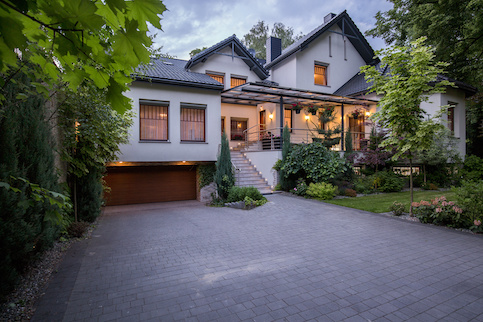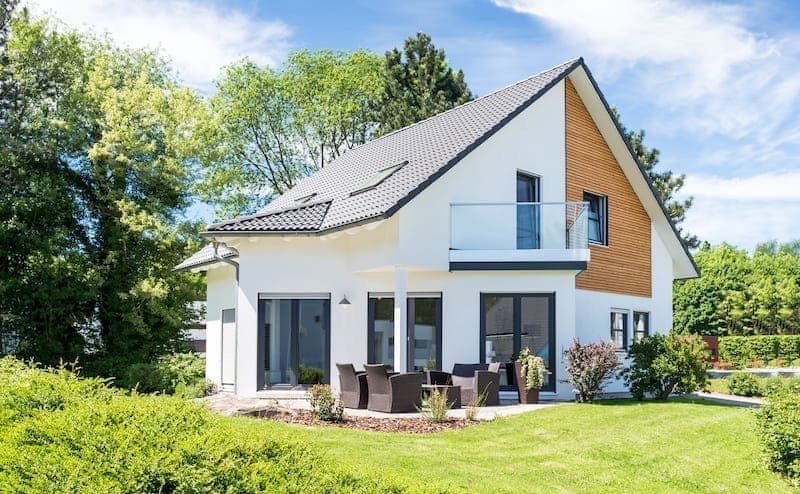As you start the home shopping process, you’ll likely realize a strong connection between mortgage interest rates and what homes you can afford. But the tie between interest rates and house prices goes deeper than your budget.
The correlation between interest rates and house prices can have a big impact on the housing market, and your home shopping journey. We explore what home buyers should know about these two factors.
What Is The Correlation Between House Prices And Interest Rates?
Interest rates and house prices tend to have a strong correlation in the real estate market. Generally speaking, when market interest rates are on the lower side, more demand in the housing market will follow. This typically drives up home prices. Meanwhile, higher market interest rates typically go together with a reduced demand for homes, leading to lower home prices.
Historical Interest Rates Vs. Home Prices
If you’ve been paying attention to the housing market over the last few years, you’ve likely noticed a connection between interest rates and the housing market.
For example, when interest rates dropped in 2020, the housing market saw a big uptick in competition among buyers, which drove up sale prices. If you were shopping for a home in 2021, you probably encountered the fall out of low interest rates in the form of bidding wars and rising home prices.
As the Federal Reserve changes the federal funds rate, mortgage interest rates tend to follow. In general, the Fed increases interest rates when inflation is above the target of 2%.
The changing mortgage rates can significantly impact prospective homebuyers. Generally, housing prices tend to stabilize or fall when mortgage rates climb.
The table below illustrates how interest rates and home prices usually tend to move in opposite directions.
Interest Rates Vs. Home Prices
Year | 30-Year Mortgage Rate | Median Home Sale Price |
|---|---|---|
1992 | 8.39% | $121,500 |
2002 | 6.54% | $187,600 |
2012 | 3.66% | $245,200 |
2020 | 3.11% | $336,900 |
2021 | 2.96% | $397,100 |
2022 Q1 | 3.76% | $433,100 |
2022 Q4 | 7.08% | $479,500 |
2023 Q3 | 7.79% | $431,000 |
See What You Qualify For
Buy A Home
Discover mortgage options that fit your unique financial needs.

Refinance
Refinance your mortgage to have more money for what matters.
Tap Into Equity
Use your home’s equity and unlock cash to achieve your goals.
How Do Interest Rates Affect House Prices For Home Buyers?
House prices and interest rates directly impact down payment amounts, monthly payment amounts and the total amount of interest they’ll pay over the life of their loan.
Down Payment
Most home buyers who use a mortgage loan to finance their purchase will need to put down a certain percentage of the sale price.
The standard is 20% down if you’re looking to avoid private mortgage insurance; however, the median down payment for U.S. buyers is 13%, according to the National Association of REALTORS®. On a conventional loan, it’s possible to go as low as 3%.
When considering how much home you can afford, it’s important to think about how much cash you have available to put down. If you put 13% down on a home that costs $200,000, you’ll need $26,000 to close on the home. If that house costs $250,000, you’ll need $32,500.
Monthly Mortgage Payment
Both the price of the home and the rate on your mortgage will affect the size of your monthly mortgage payments.
Excluding taxes and insurance, your monthly mortgage payment is made up of two basic elements: principal and interest. Principal is the initial amount you borrowed, and interest is the amount you’re charged for borrowing that money.
It might seem obvious how the price of a home will impact the amount you pay each month, but you may not realize how much your mortgage interest rate can impact this as well.
Say you get a 30-year fixed-rate mortgage for $200,000 with an interest rate of 4%. Your monthly payment will be about $955. Contrast this with a $200,000 loan at 3.5%, with which you’ll have a monthly payment of roughly $898. That’s a $57 difference each month.
Total Interest Paid
A higher interest rate on a mortgage loan means you’ll pay more in interest each month, which adds up to more interest over the life of your loan. Ultimately, this can lead to spending thousands of extra dollars on your homeownership costs.
For example, a home buyer with a 30-year, fixed-rate mortgage for $200,000 with a 4% interest rate will pay $143,739 in interest over the life of the loan. In contrast, a home buyer with a $200,000 loan and a 3.5% interest rate will pay $123,312 over the loan term. The small difference in interest rates could lead to paying over $20,000 more.
FAQ
Now that we’ve touched on the basics, let’s run through the questions you might have.
The Bottom Line
The best time to purchase a home is when you’re ready for the major financial commitment. Since home prices and interest rates are constantly changing, it’s difficult to time the market to your advantage. Instead of trying to find the perfect balance of interest rates and home prices, work on readying your finances for homeownership by saving for a down payment, building up your credit score and paying down any debt you owe.
Find A Mortgage Today and Lock In Your Rate!
Get matched with a lender that will work for your financial situation.

Sarah Sharkey
Sarah Sharkey is a personal finance writer who enjoys diving into the details to help readers make savvy financial decisions. She’s covered mortgages, money management, insurance, budgeting and more. She lives in Florida with her husband and dog. When she's not writing, she's outside exploring the coast. You can connect with her on LinkedIn.












